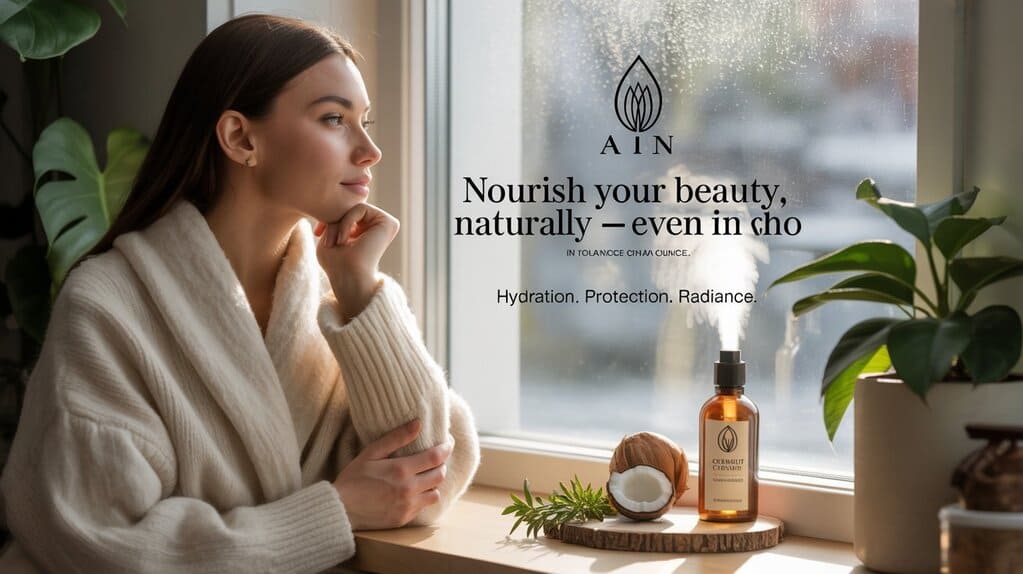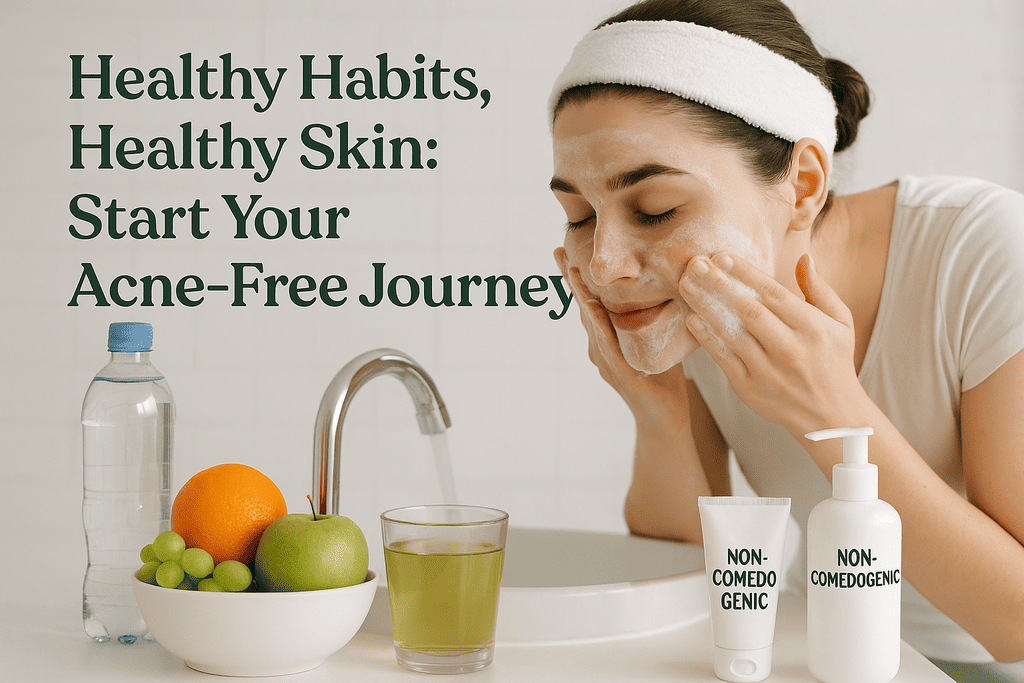
Introduction
Late fall and early winter bring crisp air, shorter days, and cozy layers — but they also bring tougher challenges for your skin. As temperatures drop and indoor heating kicks on, humidity falls, the skin’s natural barrier becomes stressed, and problems such as dryness, flakiness, sensitivity, eczema flares, and dullness become far more common. This guide explains the science behind seasonal skin changes and gives practical, evidence-based strategies — from gentle cleansing to ingredients to seasonally smart treatments — so your skin stays healthy, hydrated, and radiant through the colder months.
Key points (quick view)
- Cold air + indoor heating = low humidity → increased transepidermal water loss (TEWL) and dryer skin. PMC+1
- Barrier lipids (especially ceramides) decline in winter and are central to dry skin; choose moisturizers that restore lipids. PubMed
- Humidifiers, not just creams, improve skin hydration in low-humidity environments when used and maintained properly. PMC+1
- Sunscreen remains important in winter, especially at altitude or on snow (high albedo). PMC+1
- Adjust actives (retinoids, acids) to lower frequency and pair with richer emollients to reduce irritation risk. PMC+1
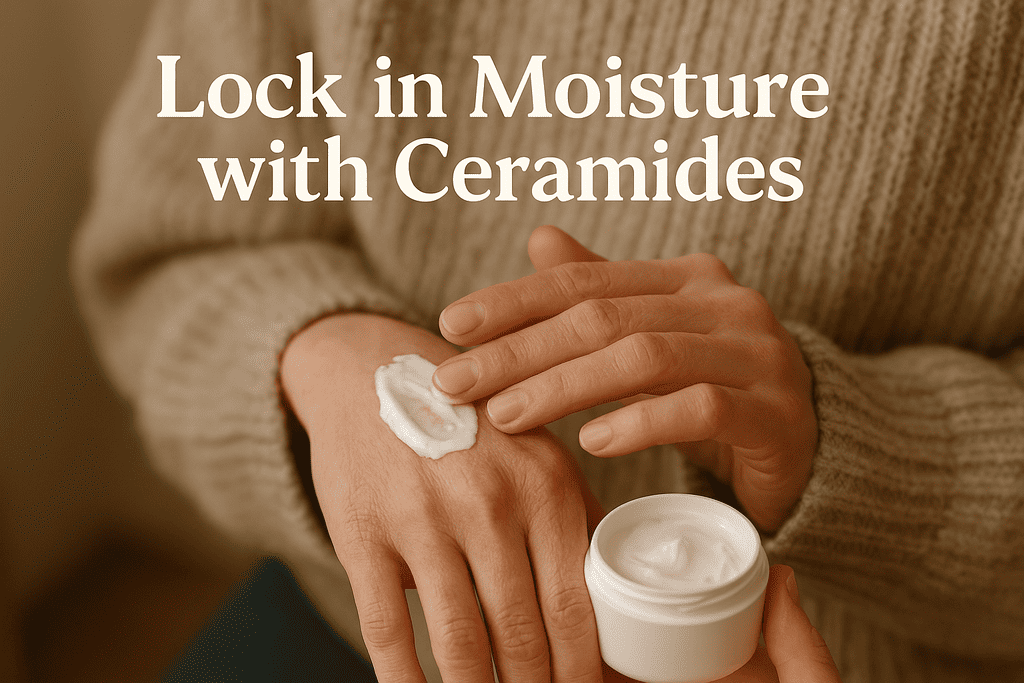
The science : why skin changes in late fall and early winter
1. Environment and the skin barrier
When outdoor air cools, it holds less moisture; indoor heating further reduces relative humidity. Low humidity increases transepidermal water loss (TEWL) and alters the structure and function of the stratum corneum — the skin’s outermost barrier. TEWL is a commonly used measure of barrier integrity and signals when barrier recovery is needed. Foundational research describes TEWL as both a marker and driver of barrier repair processes. ScienceDirect+1
A 2023 controlled study comparing short winter indoor exposure found that skin temperature, roughness, redness, and TEWL increased after just a few hours in winter indoor conditions — confirming that even brief exposure to cold, dry environments stresses skin. PMC
2. Lipids, ceramides and water-holding
Ceramides and other barrier lipids (cholesterol, free fatty acids) maintain water retention and barrier resilience. Several studies across Asia and Europe have demonstrated that winter dry skin often correlates with reduced ceramide content in the stratum corneum, and topical therapies that restore ceramides lead to measurable improvements in dryness. PubMed
3. Behavior: showers, cleansing and irritation
Hot and prolonged showers strip natural oils and damage the barrier, increasing susceptibility to irritation. Research and clinical reviews recommend lukewarm (not hot) water and short cleansing times to protect barrier function, especially in cold months. PMC
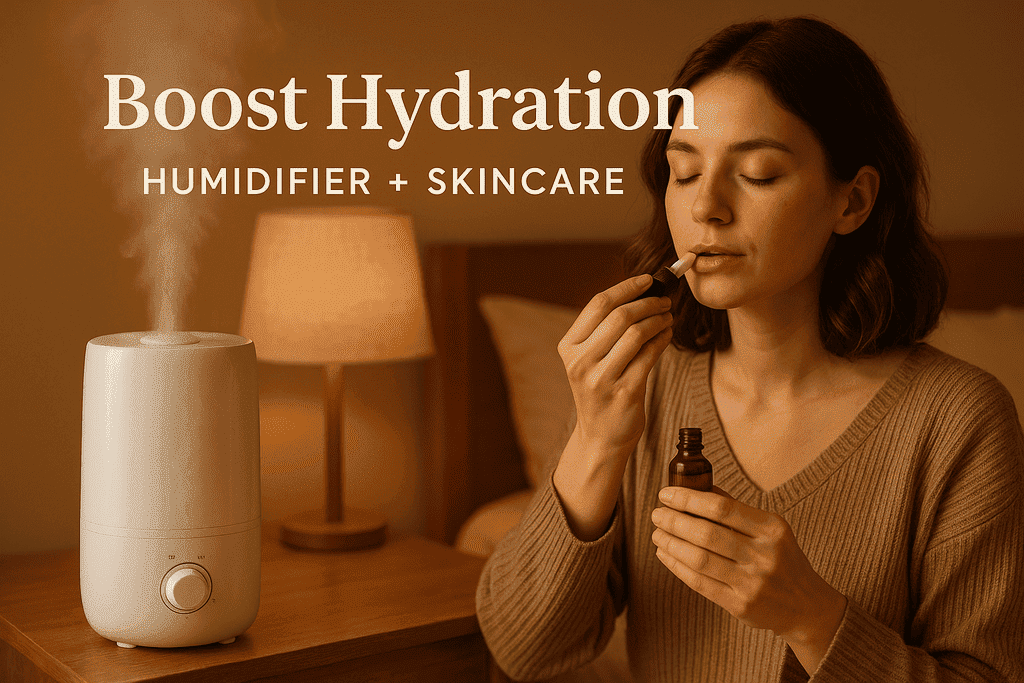
Practical seasonal skincare routine (step-by-step)
Morning routine
- Gentle cleanse: Use a mild, fragrance-free cleanser. Avoid hot water.
- Antioxidant serum (optional): A stabilized vitamin C serum can protect against environmental stressors — use if skin tolerates it.
- Hydrating serum: Apply a humectant such as hyaluronic acid or glycerin to attract water to the skin.
- Barrier cream with lipids: Choose a moisturizer that lists ceramides, cholesterol, fatty acids, squalane, or dimethicone. Layer over humectant while skin is slightly damp to seal hydration. PubMed+1
- Sunscreen (broad-spectrum SPF 30+): Even in winter — UV and reflected snow/ice can cause sun damage. Reapply if outdoors for long periods. PMC+1
Evening routine
- Gentle cleanse (remove sunscreen and pollutants).
- Targeted treatments: If using retinoids or chemical exfoliants, reduce frequency (e.g., alternate nights) and pair with richer moisturizers to prevent irritation. Monitor for redness or peeling and scale back if necessary. klira.skin+1
- Rich occlusive moisturizer: Ingredients such as petrolatum, beeswax, or heavy emollients can form an occlusive layer to prevent TEWL. Use thicker creams at night on very dry areas.
Ingredients and what to look for (illustration table)
| Skin need | Ingredients to prioritize | Why they help | Winter usage tip |
|---|---|---|---|
| Hydration (draw water to skin) | Hyaluronic acid, glycerin, urea (low %) | Humectants attract water into the stratum corneum | Apply to damp skin before moisturizer |
| Barrier repair | Ceramides, cholesterol, fatty acids, squalane | Replace missing lipids, restore barrier integrity | Use daily; look for “multi-lipid” formulas. PubMed |
| Occlusion (prevent water loss) | Petrolatum, dimethicone, lanolin | Create a sealing layer to reduce TEWL | Great for night use and dry patches |
| Soothing / anti-inflammatory | Niacinamide, panthenol, colloidal oatmeal | Reduce redness and improve barrier recovery | Niacinamide also improves tone and reduces TEWL |
| Actives (use carefully) | Retinoids, AHAs/BHAs, vitamin C | Anti-aging and resurfacing — but can irritate in winter | Reduce frequency; always pair with barrier cream. klira.skin |
| Sunscreen | Broad-spectrum mineral or chemical SPF 30+ | Protects against UVA/UVB even in winter | Apply daily; higher risk at altitude or near snow. PMC+1 |
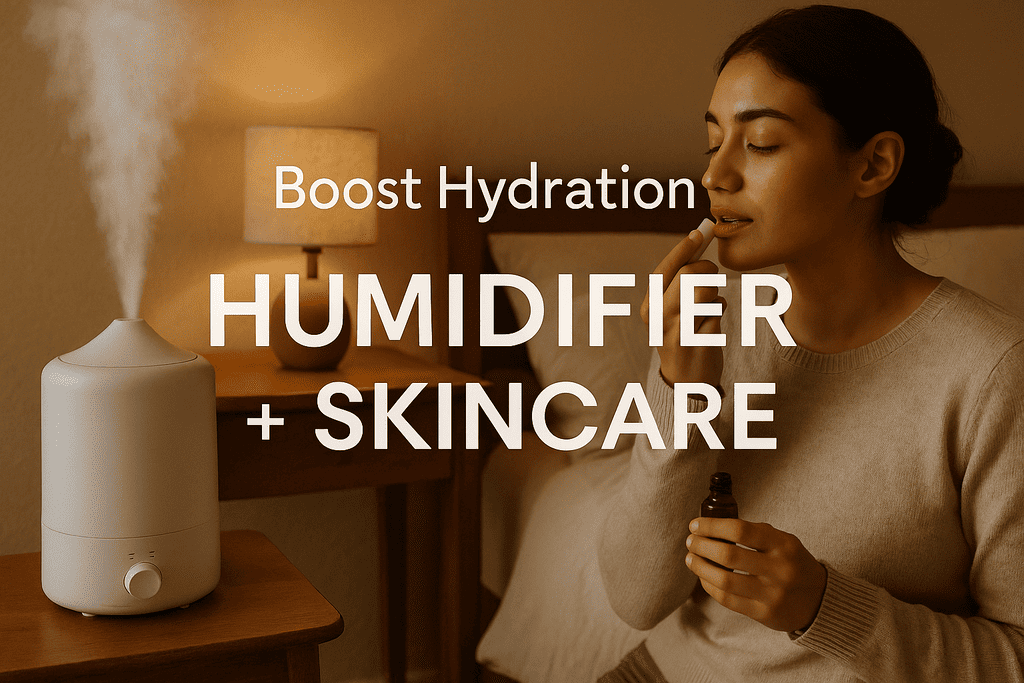
Devices and lifestyle measures that matter
- Use a humidifier indoors: Systematic reviews and clinical evidence support humidification to prevent or reduce the skin effects of low-humidity environments. Keep indoor RH ideally around 40–50% to reduce TEWL and skin roughness. Clean devices regularly to prevent microbial growth. PMC+1
- Shorter, lukewarm showers: Hot water increases barrier disruption; brief, warm showers followed by prompt moisturization are recommended. PMC
- Layer clothing and protect exposed skin: Windproof outer layers and scarves reduce direct cold/wind exposure; gloves help prevent hand dermatitis.
- Diet and hydration: Omega-3 fatty acids and adequate water intake support skin health. While topical care is primary for surface barrier repair, nutrition plays a supportive role.
Special issues and how to handle them
Atopic dermatitis (eczema) and winter flares
Eczema commonly worsens in colder months. Studies show seasonal variation, with many patients experiencing worse severity in winter. The cornerstone of winter eczema care is liberal emollient use, avoiding triggers, and following prescribed topical anti-inflammatory regimens. If flares persist, seek dermatology care for possible prescription therapy. PMC+1
Rosacea and cold weather
Cold wind can trigger flushing and irritation. Use gentle, non-irritating cleansers and barrier creams; consult a dermatologist for targeted rosacea therapies.
Hands and feet: thicker skin, bigger problems
Hands often suffer from frequent washing plus cold exposure. Use thicker barrier creams and consider overnight occlusion (cream + cotton gloves). Avoid harsh detergents and use fragrance-free products.
Clinical and research highlights (recent/reputable studies)
- Indoor winter exposure effects (Korea, 2023): Short exposure to winter indoor conditions increased TEWL, roughness, redness and other measurable skin changes — highlighting the rapidity of environmental impact. PMC
- Humidification review (2021): Experimental evidence links low-humidity environments to decreased superficial skin water content; humidification shows benefit in preventing skin dryness. PMC
- Ceramide profile and winter dry skin (Japan, 2013): Demonstrated that winter dry skin correlates with altered ceramide profiles and that topical interventions improving ceramide content improved skin dryness. PubMed
- TEWL and barrier biology (classic and review literature): TEWL remains a fundamental measure of barrier function; barrier disruption signals repair mechanisms and guides topical therapy choice. ScienceDirect+1
- UV exposure relevance in winter (environmental UV literature): UV intensity varies with altitude and reflective surfaces (snow), so sun protection remains important even in cold months. PMC+1
Quick checklist (what to do this week)
- Switch to a richer cream with ceramides.
- Set a bedroom humidifier to 40–50% and clean weekly. PMC
- Make showers short and lukewarm. PMC
- Continue daily SPF even when cloudy or snowy. Academie Américaine de Dermatologie+1
- Reduce frequency of strong actives (retinoids, AHAs) if irritation appears. klira.skin
Conclusion
Late fall and early winter are not a time to neglect skincare — they’re a chance to double down on barrier repair and protection. Prioritize ingredients that restore lipids (especially ceramides), use humectants then occlusives to lock in hydration, protect with sunscreen, and modify potentially irritating treatments. Simple lifestyle adjustments — humidifiers, shorter lukewarm showers, protective clothing — can make a measurable difference. If you struggle with persistent dryness, flares of eczema, or significant irritation, consult a board-certified dermatologist for tailored care.
Selected references and further reading
- Park EH, et al. Effects of winter indoor environment on the skin. 2023. PMC. PMC
- Byber K, et al. Humidification of indoor air for preventing or reducing skin dryness. 2021. PMC. PMC
- Ishikawa J, et al. Dry skin in the winter is related to the ceramide profile in the stratum corneum and can be improved by treatment with a Eucalyptus extract. 2013. PubMed. PubMed
- Grubauer G, Elias PM, Feingold KR. Transepidermal water loss: the signal for recovery of barrier structure and function. 1989. (Foundational barrier biology). ScienceDirect
- Fluhr JW, et al. Transepidermal water loss reflects permeability barrier status. 2006. PubMed. PubMed
- Andersen PA, et al. Environmental Cues to Ultraviolet Radiation and Personal Exposure. 2010. PMC (UV exposure and altitude/albedo). PMC
- American Academy of Dermatology. Survey & guidance on winter sun protection. 2024 AAD News Release. Academie Américaine de Dermatologie
- MedlinePlus / National Cancer Institute. Sunscreen in the winter? 2023. NIH MedlinePlus Magazine
- Herrero-Fernandez M, et al. Impact of Water Exposure and Temperature Changes on Skin Barrier. 2022. PMC. (On hot water and barrier damage). PMC

